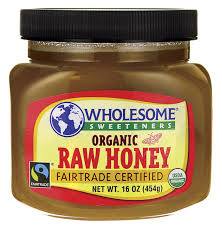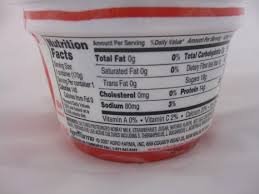
Honey is almost pure fructose
Think high fructose corn syrup is any different than raw honey, cane sugar, or table sugar? Turns out it really isn’t. When tested with volunteers the same effect from the fructose component of sugar impairs equally whether it comes from honey, cane sugar, raw sugar, or high fructose corn syrup.
THE STUDY
For two weeks, a group of volunteers took 50 grams of carbohydrate from honey, sucrose (table sugar), or high fructose corn syrup. This is equivalent to one “medium” drink of coke, or 2 pieces of Pita bread, or 1 bowl of oatmeal, or 1 cup of rice.
In all people – there was an increase in triglycerides in all. In those with an impaired glucose tolerance, there was increased inflammatory response and glycemic response. We have discussed High Fructose Corn Syrup: Health Risks previously.
Fructose is passively absorbed in the small bowel. Fructose in fruit is mostly bound to the fiber of fruit and not completely absorbed. Thus, the effect of sugar, high fructose corn syrup, agave, and the fructose found in baked goods, juices, and yogurt are devastating.
The American Heart Association has stated that women should have no more than 24 grams of sugar a day (36 for men).
The importance is to realize that “raw sugar” or “agave” or any fructose has the same effect as high fructose corn syrup – but in terms of grams of fructose (the evil twin in table sugar) there is more fructose in honey and Agave Nectar (which is all fructose). But to also realize how many ingredients have fructose as a component. This can be devastating to people who have impaired glucose tolerance.
- 1 Tablespoon of honey has 17 grams of fructose
- 1 tablespoon of Agave Nectar has 15 grams of fructose
- 1 Krispy Crème Donut contains 10 grams of sugar or 5 grams of fructose
- 1 teaspoon of table sugar has 2 grams of fructose
- 1 Medium Coke contains 44 grams of sugar or 22 grams of fructose

See that 19 grams of sugar on the back of yogurt? Consider the American Heart Association recommends 24 grams for a daily dose for women. This has more sugar in it than some Ben and Jerry’s Ice Cream – so you think this is healthy? Really? It isn’t. Most yogurt is nothing more than a less tasty ice cream.
1 serving of Chobani Greek Strawberry Yogurt 19 grams of sugar about 10 grams of fructose.
REFERENCE:
Consumption of Honey, Sucrose, and High-Fructose Corn Syrup Produces Similar Metabolic Effects in Glucose-Tolerant and -Intolerant Individuals1,2
Susan K Raatz, LuAnn K Johnson3, and Matthew J Picklo
Journal of Nutrition, September 2015
